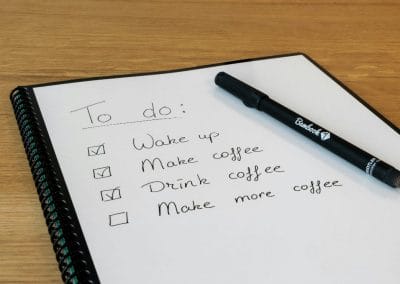We often put creativity into a box–either you are a creative person or you aren’t. But research shows that creativity doesn’t work that way. We all have the capacity to create, and we can learn to cultivate that creativity throughout our lives. Nurturing creativity leads to creative problem solving and innovation. In fact, business research indicates that creative thinking is one of the top competencies valued by CEOs across multiple continents. Unfortunately,in the US, we are seeing a decline in creativity. One study found that creativity scores on the Torrance Tests of Creative Thinking of more than 270,000 children and adults in 2011 were significantly lower than the scores of a cohort of adults and children who took the test in 1990 (Kim, 2011).
Why is there so much decline? Researchers believe it could be due to a number of factors: 1) an increased reliance on screens for entertainment, rather than relying on imaginative play; 2) the lack of focus on creativity in schools and cutting of creative programs like art, music, theatre, and movement; 3) the aforementioned believe that either you are creative or you aren’t, which leads to a failure to recognize everyday moments of personal creativity. Preschool children tend to be incredibly creative, but those inclinations start to decline as children age. Young children are in a stage that Kohlberg called preconventional. During the preconventional stage, children are less focused on what others think. They move about the world uninhibited by expectations. They aren’t afraid to try new things and to experiment creatively because they aren’t as focused on how people evaluate their work. As they age, children become more cognizant of other’s opinions and start to conform to societal norms and expectations. And it’s at age 9 or 10 when we see a significant decline in creativity (Runco, 2014). By the time we are adults, we further struggle with comparing ourselves to others. There are countless articles about how comparing ourselves to others on social media can affect our mental health. It’s no wonder we lose sight of the creative things that make us unique and bring us joy.
What characteristics do we need to be creative? And if creativity can be learned, how can we cultivate it as adults?
- Curiosity. We need to look at the world with what psychologists often call a “beginner’s mind.” With this mindset, we jump into an activity or read about a concept with no preconceived notions about the outcome. We just enjoy the adventure of trying a new thing, of finding out more about something that piques our interest.
- Playfulness. As adults, we often forget how to play. Sure, we may play on our company softball league or go out for drinks with friends, but we rarely use our imaginations to create something fun and exciting. We sit on the bench while our children play, checking our email or staring into space. Of course, sometimes we need some downtime to just zone out for awhile as a parent, but we also need to choose valuable moments to immerse ourselves in a pretend world filled with magical creatures and cotton candy forests. Don’t worry. If you’re lost, your child will show you the way. Let them lead you on an adventure from time to time.
- A Sense of Adventure. I’m a big fan of this one. In fact, my husband and I had an adventure theme at our wedding. Seeing life as an adventure gives you the willingness to try new things and new experiences. Join a poetry class down at the community center. Become inspired to start a DIY project by following an expert on Instagram or YouTube. Take a cooking class at a local market. Will you succeed at everything? Absolutely not. I remember when I decided to take a pastels class at a local art museum. When the instructor looked at my work, she said, “Maybe a different class would be better for you.” Of course, I felt a little embarrassed and vulnerable at the time, but I took it in stride, and I actually took another pastels class at a different venue. I was never great at it, but I enjoyed the childlike look of my messy hands, and I just had fun with it.
- Imagination. Many of the ideas I listed above will improve your imagination as a byproduct of the experience. But there are some other ways to stimulate your imagination. Meditation can help get rid of the noise in your head so that you mind is more free to be creative. Reading, especially fiction, can help your imagination by creating a mind movie of the story in your head. Even doodling or sketching when you are bored can cultivate imagination. You don’t need to ever show it to anyone. You can sketch something just for yourself.
- Find a community. Find friends and colleagues and create something as a group. Join a book club. Or join classes, like we mentioned before. Surround yourself with everyday creatives, and you’ll find new areas of joy.
- Let go of comparison. You can’t lose yourself in a creative activity if you are constantly comparing yourself to others. Remember that creativity involves your unique contribution to the world, in whatever creative form that is. When you start to feel yourself shrinking because of comparison, try some mindfulness techniques. Stop focusing on the product and savor the process. Do you enjoy the feeling of clay in your hands? Do you enjoy the color you’re painting your upcycle project? How does your body feel as it moves along to the music? Close your eyes and focus on you, and savor the moment.








